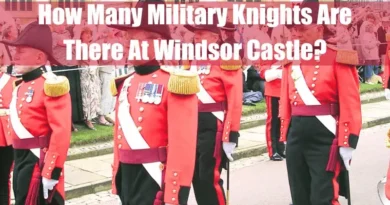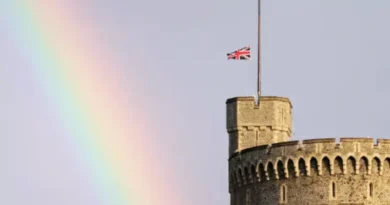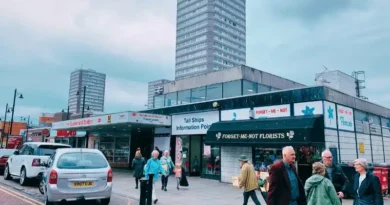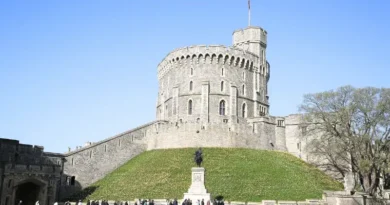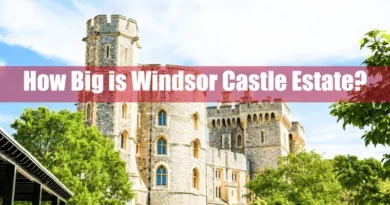Get to Windsor Castle From Brighton
Key Points
- Windsor Castle is approximately 69 miles (111 kilometres) from Brighton. Travelling from Brighton to Windsor Castle offers several transport options, each with varying durations, comfort levels, and complexity.
- The fastest and most direct method is by car via the M25, taking approximately 1 hour and 46 minutes, covering 69 miles. The journey begins on the A23 from Brighton, merging onto the M23 and then continuing along the M25 before exiting at junction 13 for the A30 and following signs to Windsor via the A308 and Castle Hill.
- Alternatively, by train, there is no direct service, but the quickest rail route takes around 2 hours 10 minutes—typically involving a Southern service from Brighton or Preston Park to Clapham Junction, then a South Western Railway train to Windsor & Eton Riverside.
- Other rail routes include transfers via London Victoria and Vauxhall, Farringdon and the Elizabeth Line to Slough, or even a bus from Victoria, though the latter is the slowest at 2 hours 46 minutes.
- For those seeking an active option, cycling to Windsor takes about 5 hours 48 minutes, spanning 67.1 miles through a mix of scenic countryside, coastal paths, and bridleways, though riders should be aware of elevation changes and potential road restrictions.
- Overall, the car journey via the M25 is the most time-efficient and convenient, especially for travellers prioritising speed and ease, though the train via Clapham Junction is a strong alternative for those preferring public transport.
Routes Comparison Table
| Mode | Route | Distance & Duration | Stops / Changes | Considerations |
|---|---|---|---|---|
| Car | Via M25 (A23 → M23 → M25 → A30 → A308) | 69 miles · 1 hr 46 min | None | Fastest route under ideal traffic conditions. Passes Gatwick, Staines, and Egham. May face congestion on the M25. Castle Hill access may be restricted at times. |
| Train | Via Clapham Junction (Southern + SWR) | Approx. 65–70 miles · 2 hr 10–23 min | 1 (Clapham Junction) | Most efficient rail option. Smooth transfer at Clapham Junction. Minimal walking. Frequent departures. |
| Train | Via East Croydon + Victoria + Clapham Jct | Approx. 70 miles · 2 hr 23 min | 2 (East Croydon, Clapham Junction) | Slightly longer route, but allows flexible departure times. Includes more walking between platforms. Good if timing alignment is important. |
| Train + Underground | Via Victoria and Vauxhall | Approx. 70 miles · 2 hr 26 min | 2 (Victoria & Vauxhall) | Involves three travel modes (rail, Underground, rail). Through central London. More walking and transfer time required. Slightly slower but may suit city travellers. |
| Train + Elizabeth Line + GWR | Via Farringdon → Slough → Windsor Central | Approx. 68–72 miles · 2 hr 23 min | 2 (Farringdon, Slough) | Modern, high-frequency services. Quick GWR transfer from Slough. Comfortable and often less crowded. Ideal for off-peak or leisurely travel. |
| Train + Bus | Via Victoria + 702 Bus | Approx. 70 miles · 2 hr 46 min | 1 (bus at Victoria) | Least efficient timewise. Long bus segment (1 hr 36 min) with 25 stops. Good for those who prefer fewer train changes. Journey length can vary significantly with traffic. |
| Cycle | Via NCR 2, South Downs Way, Downs Link, A281, A308 | 67.1 miles · 5 hr 48 min | None | Scenic but challenging. Includes coastal paths, countryside tracks, and bridleways. Some segments are restricted or private. Elevation gain of 876 ft. Castle Hill and Sheet Street may be closed to cycles at times. |
Getting to Windsor Castle from Brighton by Car
Route: Via M25
This is the fastest route available, and under ideal traffic conditions, the journey from Brighton to Windsor Castle takes approximately 1 hour and 46 minutes, covering a distance of 69 miles.
Step-by-Step Driving Directions
Start: Brighton, Brighton and Hove, UK
Section 1: Brighton to M23 (via A23, Saddlescombe Road, B2118 and A23)
Estimated Time: 39 minutes
Distance: 21.9 miles
- Head southwest toward Old Steine/A23 (269 ft)
- Turn left onto Old Steine/A23 (0.6 mi)
- Turn left onto St Peter’s Place/A23 (3.1 mi)
- At the roundabout, take the 1st exit onto Mill Road (1.1 mi)
- At Devil’s Dyke Interchange, take the 4th exit onto Devil’s Dyke Road (0.5 mi)
- Go through 1 roundabout
- Slight right onto Saddlescombe Road (2.9 mi)
- At the roundabout, continue straight onto A281 (1.1 mi)
- Turn right onto Brighton Road/B2117 (1.0 mi)
- Turn left onto B2118 (2.5 mi)
- At the roundabout, take the 2nd exit and stay on B2118 (0.1 mi)
- Take the ramp onto A23 (8.9 mi)
Section 2: M23 to A30 (via M23 and M25)
Estimated Time: 40 minutes
Distance: 40.6 miles
- Keep right to continue on M23 (14.0 mi)
- At junction 8, use the 2nd from the left lane to take the M25 exit toward M4/M1/Heathrow Airport/Watford (0.4 mi)
- Use the right lane to take the ramp onto M25 (26.0 mi)
- At junction 13, exit onto A30 toward London (W)/Hounslow/Staines (0.2 mi)
Section 3: A30 to Windsor Castle (via A308 and Castle Hill)
Estimated Time: 15 minutes
Distance: 6.5 miles
- Use the right lane to merge onto A30 (0.2 mi)
- At the roundabout, take the 4th exit and stay on A30, heading to A308/Bagshot/Egham/Windsor (0.5 mi)
- Slight left to stay on A30 (0.8 mi)
- Merge onto The Glanty/A308 – continue to follow A308 (2.0 mi)
- At the roundabout, take the 2nd exit onto Straight Road/A308 – continue to follow A308 (2.2 mi)
- At the roundabout, take the 4th exit onto Kings Road (0.5 mi)
- Continue onto Sheet Street/B3022 (0.3 mi)
- Note: Parts of this road may be closed at certain times or days
- Go through 1 roundabout
- Turn right onto Castle Hill (266 ft)
End: Windsor Castle
This comprehensive step-by-step route offers a clear guide for drivers departing from Brighton, ensuring a smooth journey to one of the UK’s most iconic royal landmarks, Windsor Castle.

Getting to Windsor Castle from Brighton by Train
Travelling from Brighton to Windsor Castle by train typically takes between 2 hours 10 minutes and 2 hours 46 minutes, depending on the route, transfer times, and choice of interchange stations. While there is no direct train between Brighton and Windsor, several viable options exist, each involving one or more changes, short walks, and, in one case, a connecting bus service.
Route via Clapham Junction (Approx. 2 hr 10 min – 2 hr 23 min)
One of the more efficient and straightforward options involves travelling from Preston Park or Brighton to Clapham Junction, followed by a connecting service to Windsor & Eton Riverside.
- In the fastest example (approx. 2 hr 10 min), a Southern service to London Victoria is followed by a short transfer at Clapham Junction, where a South Western Railway train takes you to Windsor. This route includes 7 stops before Clapham and 11 stops en route to Windsor. Walking segments between platforms are minimal, around 3 to 10 minutes in total.
- A variation of this route (approx. 2 hr 23 min) starts on a Thameslink service to East Croydon, followed by a Southern train to London Victoria, before connecting through Clapham Junction. While the overall journey is slightly longer, it allows for more flexible departure times and potentially shorter platform transfer walks.
Route via Victoria and Vauxhall (Approx. 2 hr 26 min)
Another route involves arriving at London Victoria, taking the Underground to Vauxhall, and continuing on a South Western Railway train to Windsor & Eton Riverside.
- This route requires three distinct travel modes: national rail, underground, and another rail connection.
- Journey segments include a 1-hour train to Victoria, a 3-minute underground ride, and a 49-minute train to Windsor.
- Waiting and walking times between segments can contribute to the overall journey time of approximately 2 hours and 26 minutes.
- With 12 stops on the final train leg, this route is marginally longer in duration but might suit travellers preferring to travel through central London.
Route via Elizabeth Line and GWR (Approx. 2 hr 23 min)
A slightly alternative approach involves taking a Thameslink train to Farringdon, continuing on the Elizabeth line to Slough, and then connecting to Windsor & Eton Central via GWR.
- This route includes more modern and high-frequency services, particularly on the Elizabeth line.
- Travel includes 12 stops on the first leg and 10 stops on the Elizabeth line before arriving at Slough.
- The final leg from Slough to Windsor is non-stop and only about 6 minutes, followed by a short 7-minute walk to the castle.
- The journey typically takes around 2 hours and 23 minutes, offering an appealing mix of speed and comfort.

Route including a Bus Connection (Approx. 2 hr 46 min)
An alternative for those wishing to reduce train transfers involves travelling to London Victoria, then taking a bus (702 London Line) to Windsor.
- After an initial 1-hour train journey to Victoria, a bus ride of approximately 1 hour 36 minutes is required, which includes 25 stops before arrival near Windsor Castle.
- This route takes the longest—about 2 hours 46 minutes—but could appeal to those wishing to avoid further train connections once in London.
- The walk from the final bus stop to the castle is brief, around 2 minutes.
Why Travel Times Vary
The total travel duration varies due to several factors:
- Number and location of transfers: Routes with more changes often introduce additional walking and waiting times.
- Frequency and speed of services: For example, the Elizabeth line and GWR combination is relatively swift due to short connection times and fast final segments.
- Time spent in transfer stations: Certain routes, such as those via Victoria and Vauxhall, involve changes between different rail systems or underground lines, which may increase overall time despite direct train legs.
- Traffic conditions for bus routes: Regarding the route involving the 702 bus, delays are more likely, hence the longer estimate.
While no single direct train exists from Brighton to Windsor, travellers are afforded multiple options to suit their preferences for speed, comfort, or simplicity. The quickest options generally involve changing at Clapham Junction or using the Elizabeth line via Slough, while alternatives through Victoria station or by bus offer flexibility at the cost of time.
Getting to Windsor Castle from Brighton by Cycle
Estimated time: 5 hours 48 minutes
Distance: Approximately 67.1 miles (108 km)
Elevation gain/loss: ↑ 876 ft · ↓ 781 ft
Highest point: 236 ft
Lowest point: 10 ft
⚠ Please note: Some parts of this route involve restricted usage or private roads, and real-world cycling conditions may differ from the directions provided. Exercise caution throughout the journey.
Starting your ride in Brighton, East Sussex, you’ll follow a largely westward and then northward path towards Windsor. The journey combines coastal cycleways, countryside tracks, and some urban stretches, connecting you with sections of the National Cycle Route 2, the South Downs Way, the Downs Link, and parts of the A281 and A308 as you approach Windsor.
Detailed Route Overview
- Brighton (Brighton and Hove) – Begin by heading southwest toward Pool Valley, making a few short turns to reach Grand Junction Road (A259).
- Continue along the A259, then make a left onto Wharf Road, joining National Cycle Route 2 (NCR 2).
- Before continuing west, you’ll navigate Basin Road South, a coastal route with restricted usage in sections.
- Follow Albion Street to High Street (A283) and detour through local roads such as Little High Street, Broad Reach, and Castle Lane.
- The route veers inland, connecting to the South Downs Way, a scenic yet undulating stretch. Caution is advised on climbs and narrow paths.
- Continue via Kings Stone Avenue, Wyckham Lane, and several smaller lanes and turns through West Sussex villages, including Hollands Lane, Upper Station Road, and Bines Road (B2135).
- You’ll pick up the Downs Link bridleway — a largely traffic-free stretch linking the South Downs to the North Downs. Follow through Christ’s Hospital and continue on to Guildford Road (A281).
- Transition onto local routes through Alfold Road, Lorimer Avenue, and Dagley Lane, weaving through Surrey’s rural byways.
- As you approach Guildford, you’ll merge briefly onto Woodbridge Road (A25) and Woking Road (A320), then continue past Jacobs Well Road and Sutton Green Road, approaching Westfield.
- After navigating minor roads and avenues, rejoin the A320 and follow signs towards Chertsey, then Staines-upon-Thames via The Causeway (A308).
- Continue along The Glanty and Windsor Road (A308). This stretch includes several roundabouts, so remain alert to traffic.
- At the outskirts of Windsor, take Kings Road and proceed to Sheet Street (B3022).
⚠ Note: Parts of Sheet Street and the nearby High Street may be closed to cyclists or traffic during certain times or days, especially around Windsor’s central tourist area.
- Turn onto Castle Hill, and after a short ascent, you’ll arrive at Windsor Castle.
Final Notes
- Be sure to check local signage and restrictions, particularly in residential or high-traffic areas such as Guildford and Windsor.
- Several points on the route, especially near coastal paths and historical lanes, have restricted access or may not be suitable for all types of bicycles.
- Consider equipping your bike with lights and reflective gear, especially if travelling near dusk or dawn.
This scenic route offers a blend of coastal beauty, countryside charm, and historic towns—a rewarding journey for experienced cyclists seeking adventure from the seaside to the stately grandeur of Windsor Castle.
Conclusion
Travelling from Brighton to Windsor Castle presents various transport options tailored to different preferences. Driving via the M25 remains the fastest and most straightforward method, particularly for those prioritising speed and convenience. Alternatively, the train route via Clapham Junction offers a reliable and efficient public transport option. While longer, other train and bus combinations provide added flexibility, and for the adventurous, cycling offers a scenic and rewarding journey. Whichever mode you choose, Windsor Castle is a highly accessible destination from Brighton, promising a memorable visit to one of Britain’s most iconic royal landmarks.




